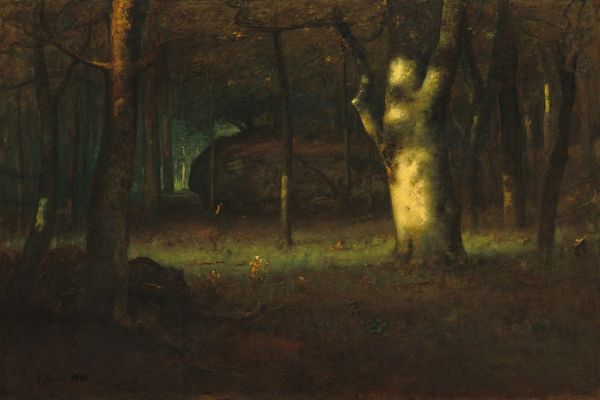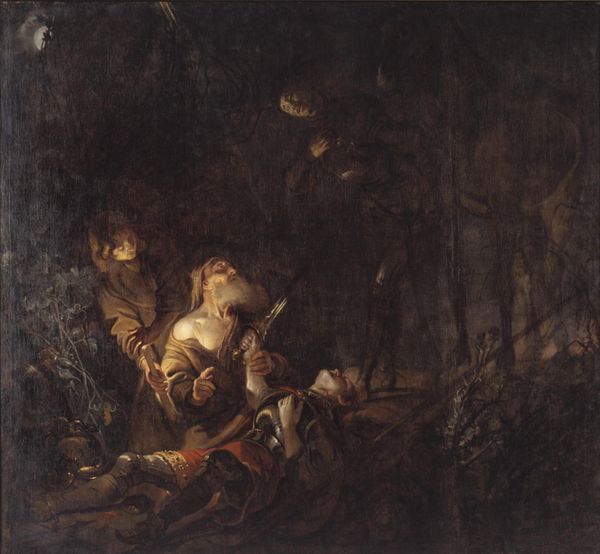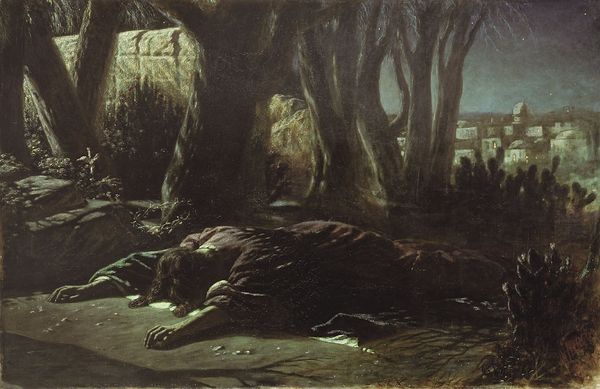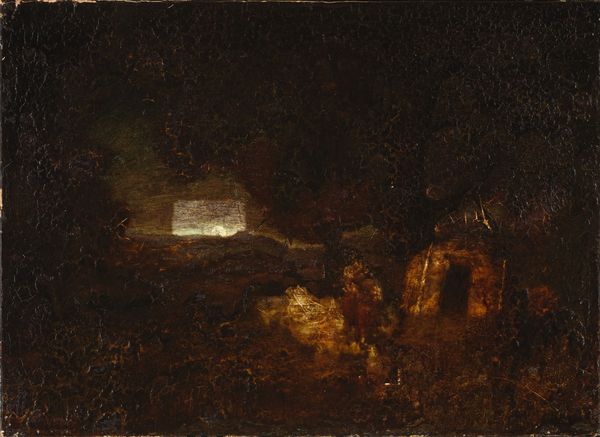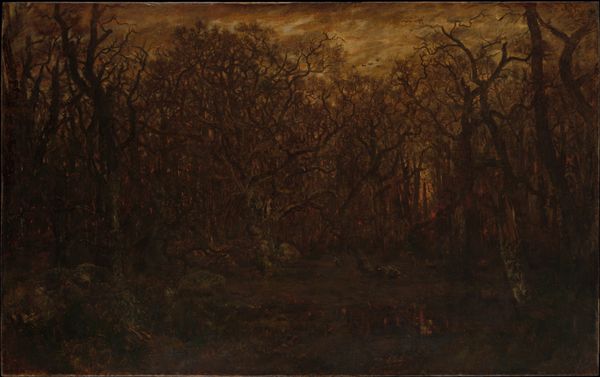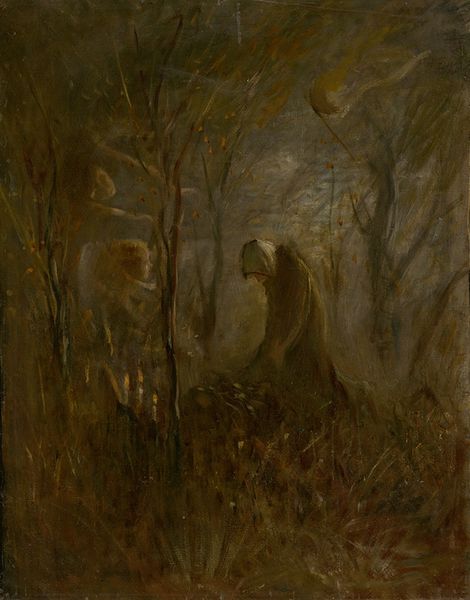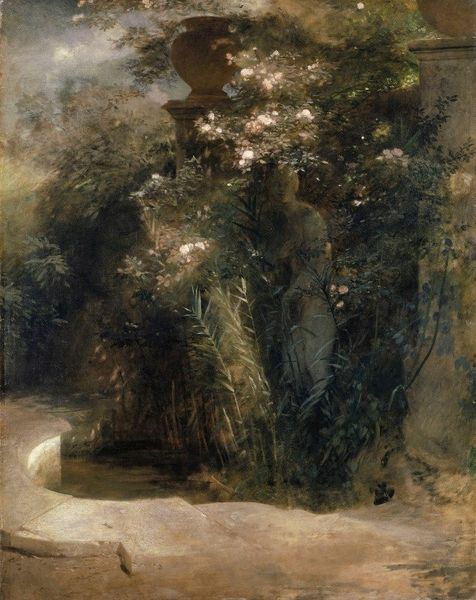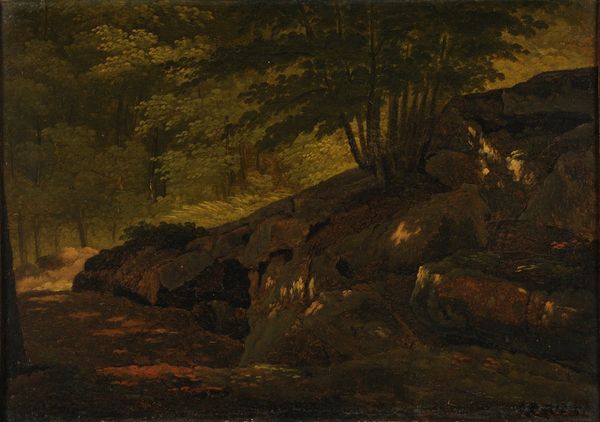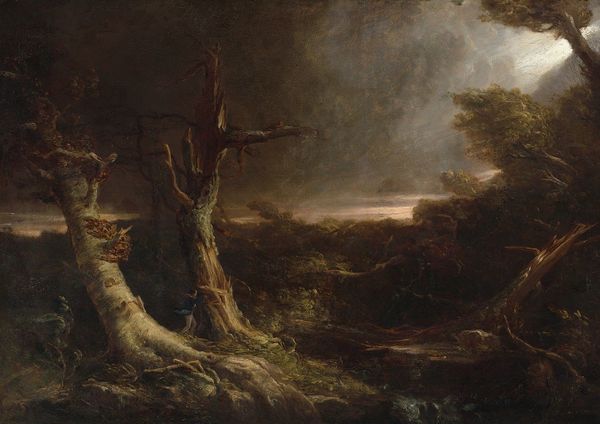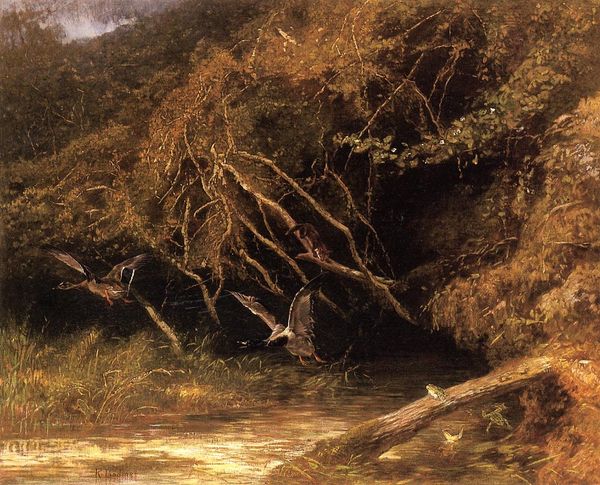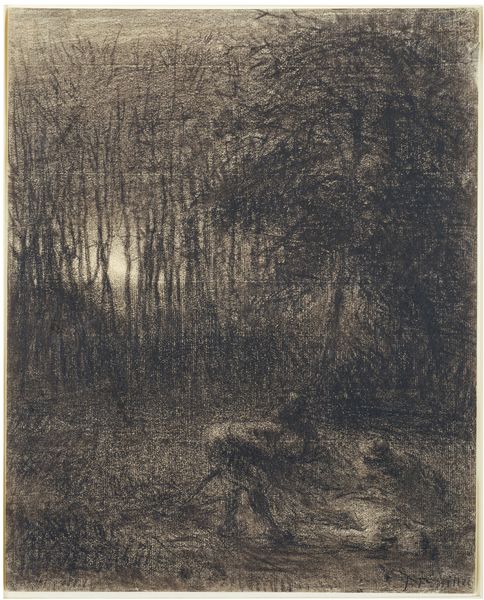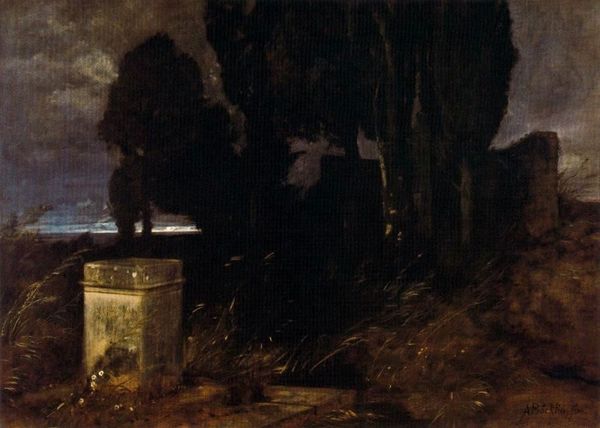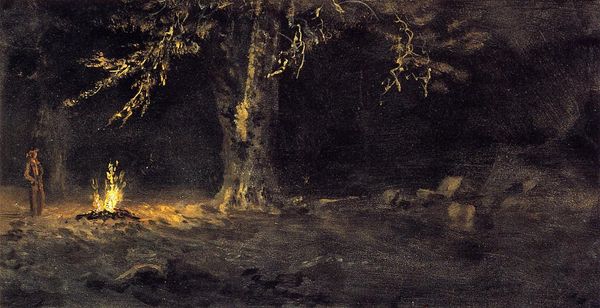
Forest Floor with a Snake, Lizards, Butterflies and other Insects 1650 - 1678
0:00
0:00
painting, oil-paint
#
baroque
#
dutch-golden-age
#
painting
#
oil-paint
#
landscape
#
oil painting
#
forest
#
painting painterly
#
genre-painting
#
realism
Dimensions: height 76 cm, width 62 cm, depth 11.5 cm
Copyright: Rijks Museum: Open Domain
Curator: My initial reaction is...gothic fairy tale? Maybe a Brothers Grimm moment rendered in oil. It's so dark and alive all at once. Editor: That’s an apt description. This oil painting, "Forest Floor with a Snake, Lizards, Butterflies and other Insects" by Otto Marseus van Schrieck, completed sometime between 1650 and 1678, is, in my opinion, a compelling piece of the Dutch Golden Age. It blends elements of baroque style and realism into an interesting genre painting. Curator: The realism hits you first, I think. You see these exquisitely rendered butterflies, lizards... even the darn snake looks photorealistic! Then you realize, "Wait a minute, something's slightly off," it is a little theatrical. It feels almost staged. Editor: Exactly! The artist's studio, apparently, was like a curated swamp! He raised snakes and insects, observing them. These "forest floor" paintings became his trademark. What fascinates me is the undercurrent of vanitas – the snake, historically associated with temptation and mortality. And the butterflies? Symbols of transformation and the ephemeral nature of life. Curator: So, the gorgeous butterfly is just fluttering towards its inevitable doom. It's pretty dark when you look at it like that. Is there hope though? What's up with the lizards? I think that it’s fascinating that a reptile can renew itself by dropping its tail in times of extreme stress. Editor: In ancient Rome and Greece, lizards were symbols of rebirth, luck, and wisdom, but were also connected with cunning, so it goes both ways, really, especially if you factor in the traditional Western reading. Schrieck certainly had a layered view of nature's symbolism, I suspect. Curator: Which he lets loose with impressive skill! The way he plays with light and shadow, creating a tiny, self-contained universe—it's rather remarkable. This forest floor isn’t just some ground. Editor: It’s an entire world of allegory and close observation, prompting the viewer to meditate on life's fragility. Looking into a dark mirror that reflects our very human anxieties. Curator: You’re so right, I had to think about my anxiety. Next time I see one, I guess I'll spend a few more moments gazing on the forest floor to seek meaning. I see something new every time I truly observe something for longer.
Comments
No comments
Be the first to comment and join the conversation on the ultimate creative platform.
